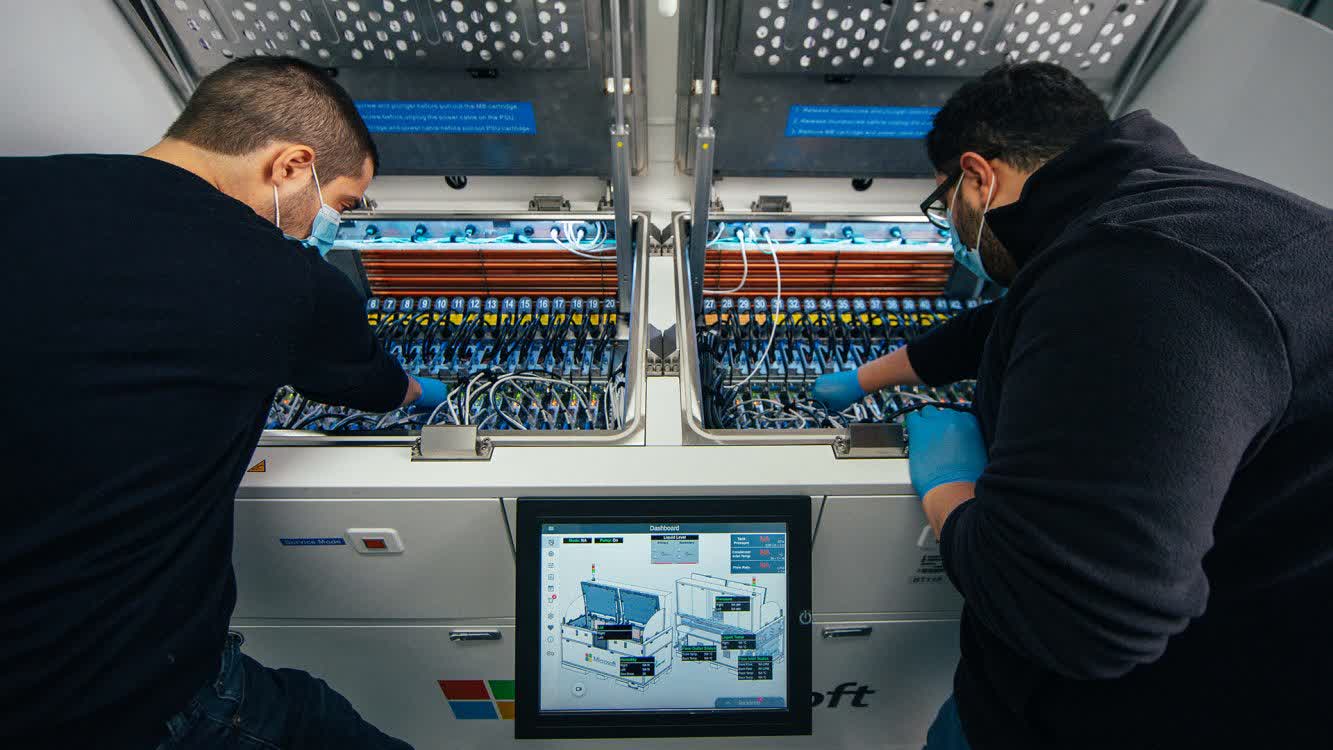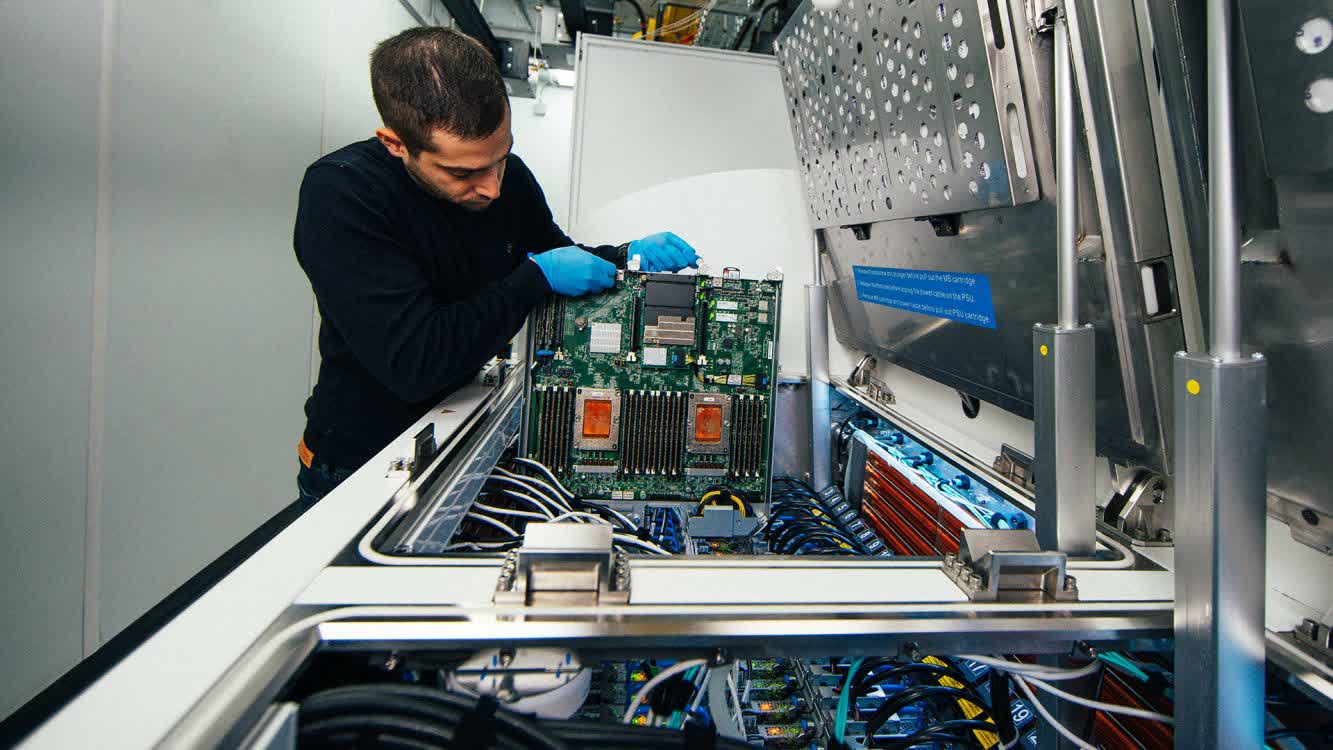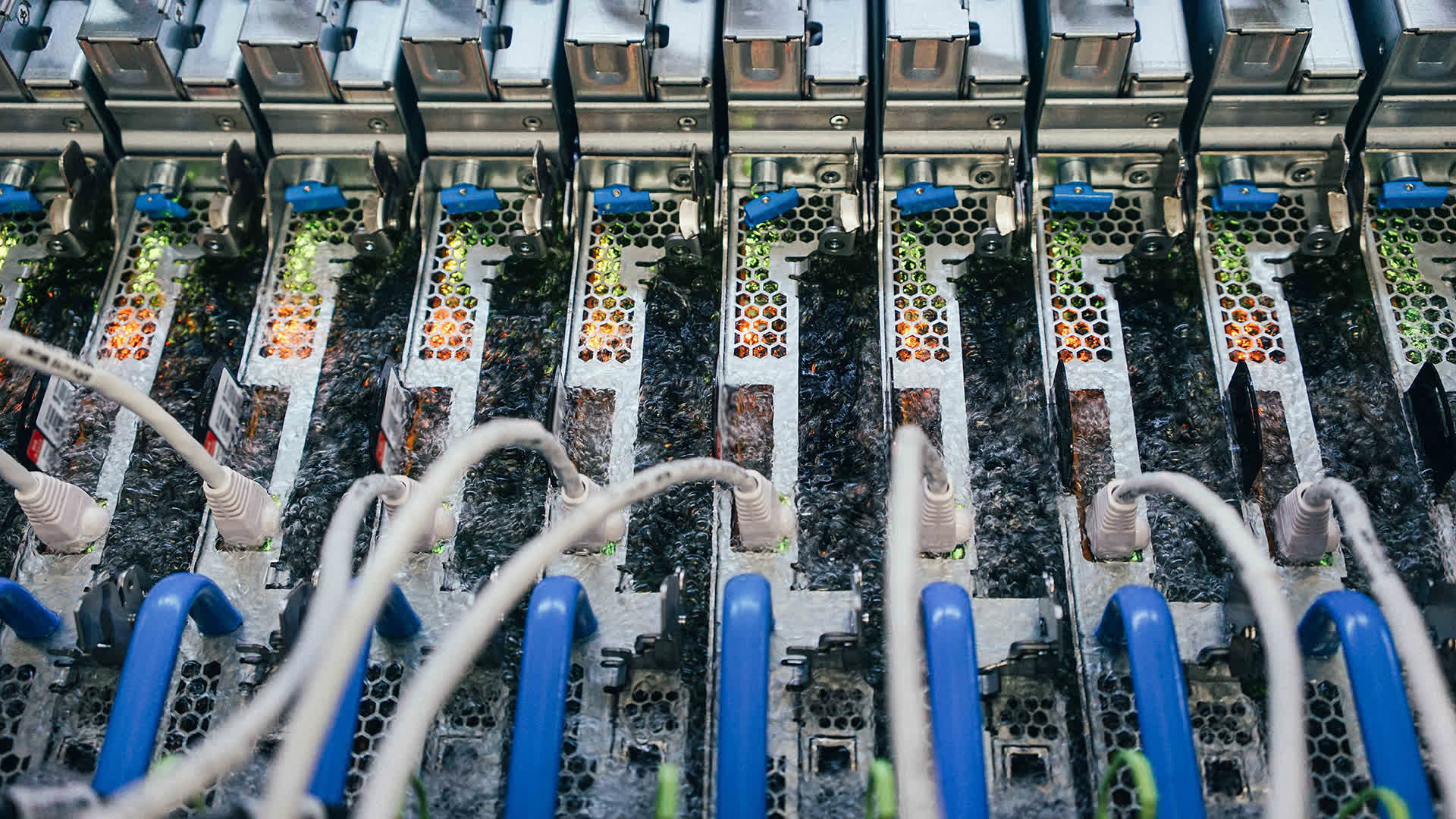The big picture: In an earlier analysis, Microsoft found that two-phase immersion cooling can reduce the power consumption of a server by as much as 15 percent. The company also anticipates that servers in the immersion tank could experience a reduced failure rate due to the lack of humidity and corrosive effects of oxygen in the air.
Moore's Law may have slowed in recent years but the demand for increasingly powerful computer hardware hasn't skipped a beat. To keep up, hardware makers are progressively feeding processors more juice which has naturally resulted in hotter chips.
"Air cooling is not enough," said Christian Belady, distinguished engineer and vice president of Microsoft's data center advanced development group. It's why the Redmond tech giant is now exploring the use of alternative cooling methods to prevent overheating.

At one of its data centers on the eastern bank of the Columbia River, Microsoft is testing a technique called two-phase immersion cooling. Inside a specially crafted steel holding tank is server hardware submerged in a non-conductive fluid from 3M that is engineered to boil at 122 degrees Fahrenheit.
When the hardware heats up, it prompts the fluid to boil. The rising vapor then comes in contact with a chilled condenser in the tank's lid, causing the vapor to change back into a liquid and rain down into the tank, thus creating a closed-loop cooling system.
The cooling coils in the tank's lid are connected to a separate system that transfers heat from the tank to an external cooler.

Microsoft plans to test the viability of the tech over the next several months. "This first step is about making people feel comfortable with the concept and showing we can run production workloads," Belady said.
